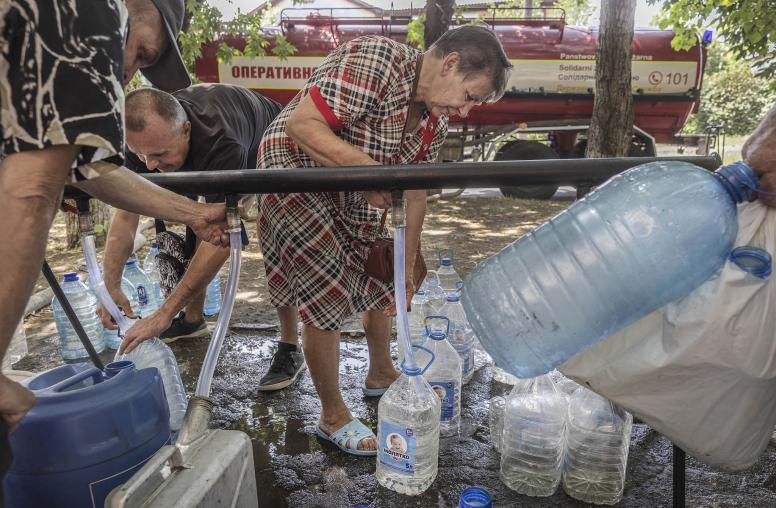How Drought Escalates Rebel Killings of Civilians
Study Pinpoints Link Between Food Shortages and Attacks by Extremists, Insurgents
The 2011 famine in Somalia, caused by a prolonged drought, killed an estimated 260,000 people. But this was more than a natural disaster. Amid the starvation, food shortages prompted rebels of al-Shabab, the armed group fighting Somalia’s government and spreading terror abroad, to attack local farmers to seize their food reserves, causing even more civilian deaths. It’s a pattern that plays out in rural regions across the developing world.

Even in the world’s largest democracy, India, famine has had a similar effect. Following the drought of 2004, hunger set in, and Naxalite rebels—the armed faction of India’s Communist Party—used violence to commandeer rural farmers’ rice lands, killing hundreds of civilians and driving many more away from their homes and communities.
Indeed, in a recent study of civil conflict and food shortages, drought increased the number of deadly attacks against civilians by a staggering 41 percent. These findings are particularly sobering considering four developing countries already beset by violent conflict are facing famines this year—Nigeria, South Sudan, Yemen and Somalia.
The pattern suggests that, even beyond the obvious humanitarian imperative, preventing famine and preparing for droughts can help improve security in environments where armed forces are on the move.
The idea that food resources affect conflict and civilian deaths is not new. As Napoleon noted two centuries ago, “The army marches on its stomach.” Today, insurgent groups operate primarily in the countryside, where rebels and civilians alike sustain themselves largely on food grown and produced locally.
During less violent periods, rebels mostly obtain food—to sustain themselves and to sell for weapons and other supplies—through negotiation or coercion. But they may try to avoid too much bloodshed because they need the support of farmers and others in the local population over the longer term.
But in more desperate times, they resort to desperate measures, and spur a new cycle of violence. As crop yields drop and farmers want to keep more for themselves to stave off shortages, rebel groups go to greater lengths to get what they need, no matter the casualties. As a result, in many cases, civilians seek to form their own defense forces, or militias, to protect their supplies. The insurgents, in turn, step up the violence to preempt attacks by the militias … and so on.
In Somalia, for instance, al-Shabab’s predatory behavior led to violent clashes with ethnic militias and similar groups over agricultural resources and foreign food assistance.
Given predictions of more severe droughts in the coming decades, the risks increase of deaths not only from hunger but also from violence caused directly by food shortages. Drought preparedness and agricultural assistance can lower those risks, even amid civil war. The same is true even for man-made famines, such as the cases of three of the countries facing famine this year because of politically driven violent conflict—Nigeria, South Sudan and Yemen. The primary culprit of the famine in Somalia is drought.
Certainly, reducing and ultimately eliminating world hunger is a worthy goal in-and-of-itself. But supporting farmers locally also can help reduce the impact of food shortages and decrease the incentive for rebels to use violence.
Ore Koren is a Jennings Randolph Peace Scholar with the U.S. Institute of Peace, a PhD candidate in political science at the University of Minnesota, and the author of articles and a forthcoming book on the relationship between food and conflict.



